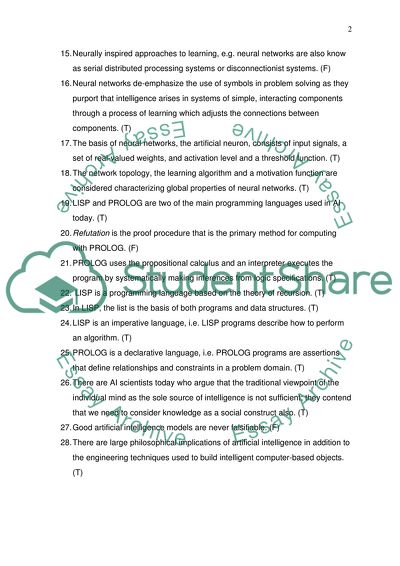Artificial Intelligence Report Example | Topics and Well Written Essays - 1750 words. https://studentshare.org/science/1705679-homework-artificial-intelligence
Artificial Intelligence Report Example | Topics and Well Written Essays - 1750 Words. https://studentshare.org/science/1705679-homework-artificial-intelligence.


